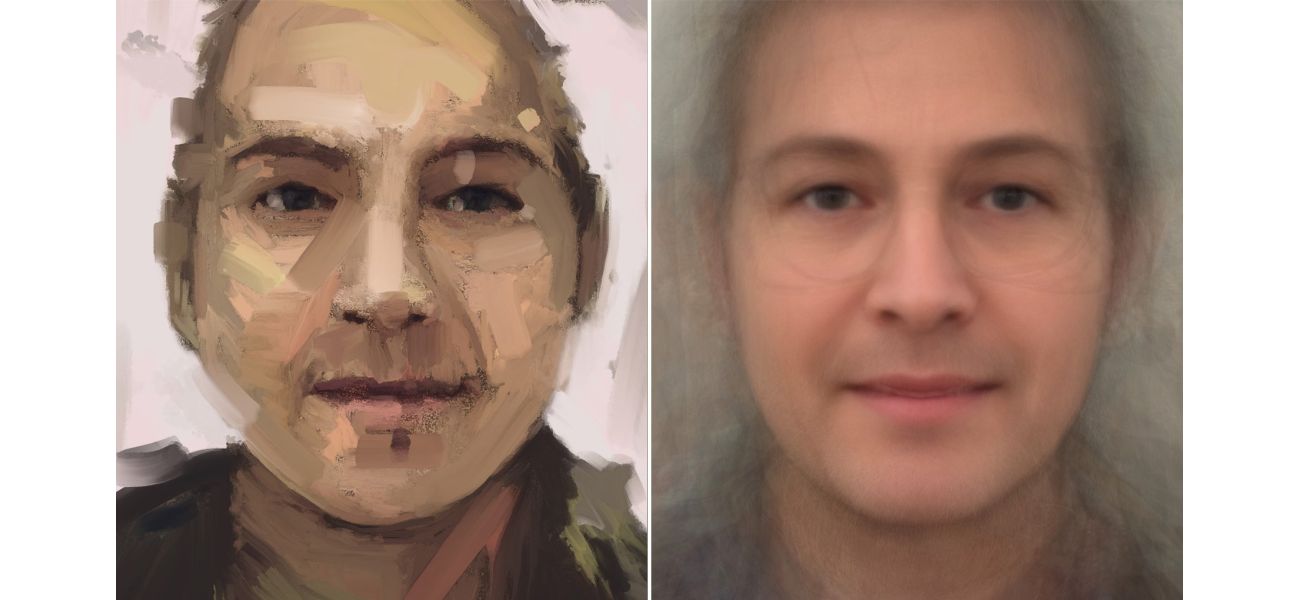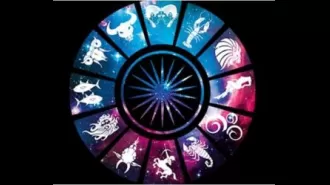AI's initial self-portrait: is this its genuine visage?
Art created by AI is a lucrative industry, as evidenced by a recent portrait selling for $1 million, but this piece highlights the intricacies involved.
December 1st 2024.

The portrait in question is a unique piece of artwork that showcases the power of AI. It is a combination of numerous headshots of real artists, whose work has been instrumental in training AI. It is a fascinating concept, as AI does not have a physical form, making any visual representation of it purely abstract. Therefore, the idea of creating a self-portrait for AI raises interesting questions – what would it choose to depict? Would it convey neural networks or a friendly robot assistant with a bland smile? These were the results when Dall-E 3 was asked to create compositions.
But now, a new artwork claims to be the first 'true' self-portrait of AI. This is because it showcases the individuals who have played a crucial role in shaping its capabilities – or at least some of them. The image, created by insurance company Hiscox, used headshots of 40 different artists, which were then merged together using a coding programme called Facer. The final product was then stylised by a designer to mimic the style of a traditional oil painting. The aim of this artwork was to highlight the fact that AI is not just a computer programme, but it is trained on creations by real people. It also sheds light on the need to recognize and compensate artists fairly for their contributions.
However, when closely examined, the 'self-portrait' of a friendly droid assistant created by Copilot is actually quite unsettling, with distorted human faces. Other AI 'self-portraits' are more conceptual, further emphasizing the abstract nature of AI. This particular artwork, on the other hand, serves as a reminder that there are real people behind the output of AI.
The creation of this portrait coincides with the release of the Hiscox Art and AI Report, which delves into how collectors are responding to the influx of AI art. While some AI art has sold for millions, the report found that traditional collectors are still not entirely convinced, despite the younger generation being more open to it. There is also a growing concern about how to fairly recognize and compensate human creators for their role in AI. For instance, Tess, the 'first properly-licensed image generator,' pays royalties to artists whose styles are used.
The report also sheds light on the ethical concerns surrounding AI art, with 42% of art collectors and enthusiasts expressing concerns, particularly about copyright infringement. Compensation is also a critical concern, along with the need for clear labelling to differentiate between AI-generated art and man-made content. Despite these concerns, some AI-generated artwork has already commanded staggering prices. Ai-Da, a humanoid robot with cameras for eyes, recently sold her painting titled 'A.I. God. Portrait of Alan Turing' at Sotheby's for a whopping $1,084,800, far exceeding the expected price of up to $180,000.
Robert Read, head of Art and Private Client at Hiscox, acknowledges that the use of AI in art is a new frontier for the art market, bringing both risks and opportunities. While advanced technologies can be a fantastic creative enabler, the research conducted by Hiscox shows that there are still issues that the industry needs to address, particularly in terms of transparency and compensation. As long as the use of AI in art is done ethically and fairly, there is nothing inherently wrong with it learning and creating based on human art.
But now, a new artwork claims to be the first 'true' self-portrait of AI. This is because it showcases the individuals who have played a crucial role in shaping its capabilities – or at least some of them. The image, created by insurance company Hiscox, used headshots of 40 different artists, which were then merged together using a coding programme called Facer. The final product was then stylised by a designer to mimic the style of a traditional oil painting. The aim of this artwork was to highlight the fact that AI is not just a computer programme, but it is trained on creations by real people. It also sheds light on the need to recognize and compensate artists fairly for their contributions.
However, when closely examined, the 'self-portrait' of a friendly droid assistant created by Copilot is actually quite unsettling, with distorted human faces. Other AI 'self-portraits' are more conceptual, further emphasizing the abstract nature of AI. This particular artwork, on the other hand, serves as a reminder that there are real people behind the output of AI.
The creation of this portrait coincides with the release of the Hiscox Art and AI Report, which delves into how collectors are responding to the influx of AI art. While some AI art has sold for millions, the report found that traditional collectors are still not entirely convinced, despite the younger generation being more open to it. There is also a growing concern about how to fairly recognize and compensate human creators for their role in AI. For instance, Tess, the 'first properly-licensed image generator,' pays royalties to artists whose styles are used.
The report also sheds light on the ethical concerns surrounding AI art, with 42% of art collectors and enthusiasts expressing concerns, particularly about copyright infringement. Compensation is also a critical concern, along with the need for clear labelling to differentiate between AI-generated art and man-made content. Despite these concerns, some AI-generated artwork has already commanded staggering prices. Ai-Da, a humanoid robot with cameras for eyes, recently sold her painting titled 'A.I. God. Portrait of Alan Turing' at Sotheby's for a whopping $1,084,800, far exceeding the expected price of up to $180,000.
Robert Read, head of Art and Private Client at Hiscox, acknowledges that the use of AI in art is a new frontier for the art market, bringing both risks and opportunities. While advanced technologies can be a fantastic creative enabler, the research conducted by Hiscox shows that there are still issues that the industry needs to address, particularly in terms of transparency and compensation. As long as the use of AI in art is done ethically and fairly, there is nothing inherently wrong with it learning and creating based on human art.
[This article has been trending online recently and has been generated with AI. Your feed is customized.]
[Generative AI is experimental.]
0
0
Submit Comment





